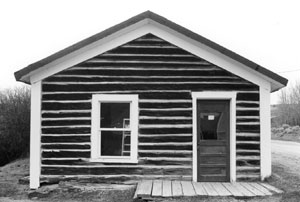South Pass City
Client: Wyoming State Parks & Recreation Commission
Site: South Pass City, Wyoming

South Pass City is located at the southeastern edge of the Wind River Mountains, 35 miles south of Lander, Wyoming. The town lies approximately 7 miles north of Sweetwater River where it flows through South Pass. This area of gently rolling hills, broken by valleys and gulches, was important to the early development of Wyoming; South Pass was the location in the Rocky Mountains that was low and sloped gently enough to allow settlers with wagons to establish the Oregon Trail to the West coast. South Pass City itself is known for its history as a 19th-century gold mining center. This historic site is owned by the State of Wyoming and managed by the Wyoming State Parks and Recreation Commission. The Collaborative completed evaluations on the physical conditions of 11 of the 32 remaining historic buildings in South Pass City. Necessary repairs were given priorities and costs estimated so that the Wyoming State Parks and Recreation Commission could develop a master plan for building stabilization and renovation. tCi’s assessment of South Pass City was part of a larger project to identify historical themes, analyze existing developments and management policies, determine maintenance plans and interpretation programs, and recommend individual preservation projects to be completed for the site. Particularly challenging was the compressed time schedule of this project. Normally, archaeology is completed prior to preservation planning and design, however, in this case, the firm began evaluations of the 11 structures in April, 1990, and archaeological fieldwork began later in the summer of 1990. This required constant changes in the scope of work as the archaeologists discovered new data, or as occurred more frequently, declared stabilization techniques unacceptable because they had insufficient field time and resources to complete archaeological clearance. Creative stabilization techniques were therefore, required to bridge these areas of concern. The reports were completed and approved on 11 buildings, and plans and specifications were completed and approved between April and August of 1990.
